Pool grout: types, manufacturers, selection rules

Swimming pools in a private house or on a personal plot are no longer a rarity. However, their organization is a technically difficult process in which you need to take into account a number of nuances, including choosing the right grout correctly.

Description
Grouting is the process of filling the tile joint in the pool with a special compound. The latter is also called grouting. It is a mistake to think that this process serves only aesthetic purposes. In fact, the grout ensures the hygroscopicity and solidity of the pool bowl. It is not enough that the composition says “waterproof”, it is important that the grout is designed specifically for the lining of the pool.
The operating conditions of the grout compound are extreme - high humidity, exposure to chlorine and similar compounds, constant pressure, and when draining the bowl - adverse environmental influences. Therefore, special requirements are imposed on the properties of this composition.
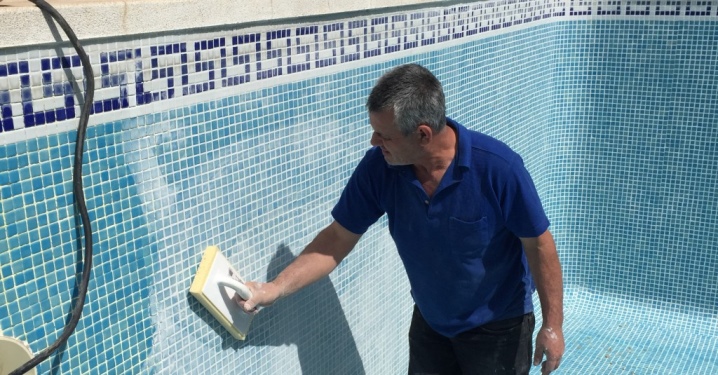
First of all, it is high adhesion for adhesion to the surface, as well as strength (hardness), otherwise the grout will not be able to withstand pressure. The elasticity of the composition is determined by its ability not to crack after hardening. It is logical that the grout should be moisture and frost resistant, as well as withstand exposure to chemicals.
The environmental friendliness of the product determines its safe operation, and the antifungal properties will ensure that mold does not form on the surface of the seams. Finally, the aesthetic qualities of the grout will ensure the attractiveness of the bowl.
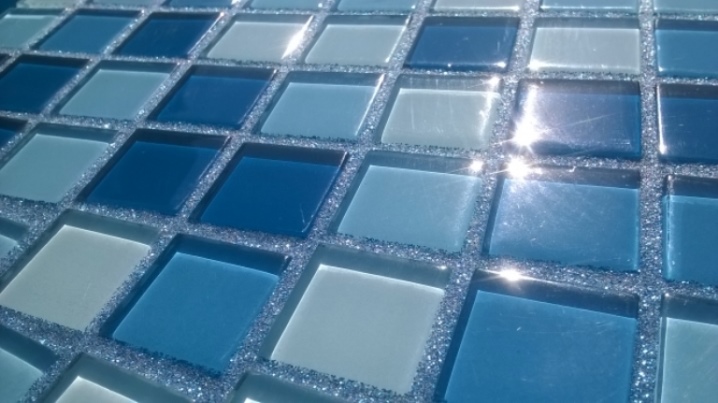
Views
Depending on the basis of the composition, the following types of grout mixtures are distinguished.
Cement
Affordable cement grouts should be free of sand. Suitable for small pools, as well as for areas that do not have constant contact with water (sides, for example). They require mixing with special latex solutions. This makes the grout resistant to chemicals in the pool water.
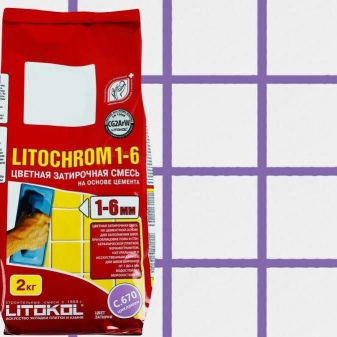

Epoxy
This grout is based on reactive epoxy resins. In terms of their properties (in addition to flammability, but this is irrelevant in the pool), such compositions are significantly superior to cement ones, and therefore their price is 2-3 times higher. In addition, working with epoxy grout requires certain skills and abilities.
Moisture resistant epoxy grout is characterized by high adhesion, however, in some cases this may turn out to be a disadvantage (for example, if it is necessary to dismantle defective tiles).
It is the high adhesion that is responsible for the rapid hardening of the diluted grout in the open air.
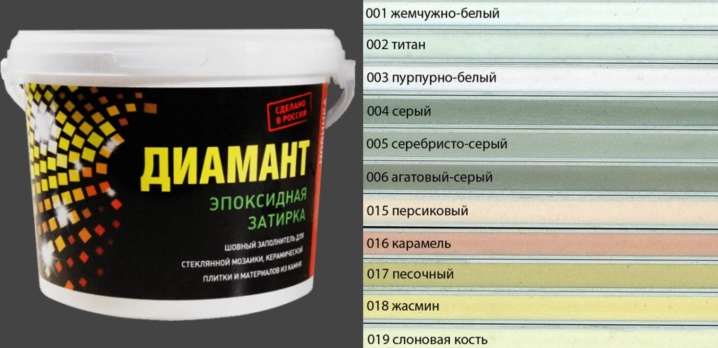
Manufacturers
Among the manufacturers who have gained the trust of specialists and ordinary users, it is worth highlighting several brands (and their grout for swimming pools).
- Ceresit CE 40 Aquastatic. Elastic, water-repellent, cement-based grout. Suitable for filling joints up to 10 cm wide. Available in 32 shades, so the composition can be matched to any ceramic color. The manufacturer uses unique innovative technologies for the manufacture of the mixture, which gives it increased adhesive, hydrophobic and antifungal characteristics, as well as the ability to operate at temperatures of -50 ... +70 degrees.
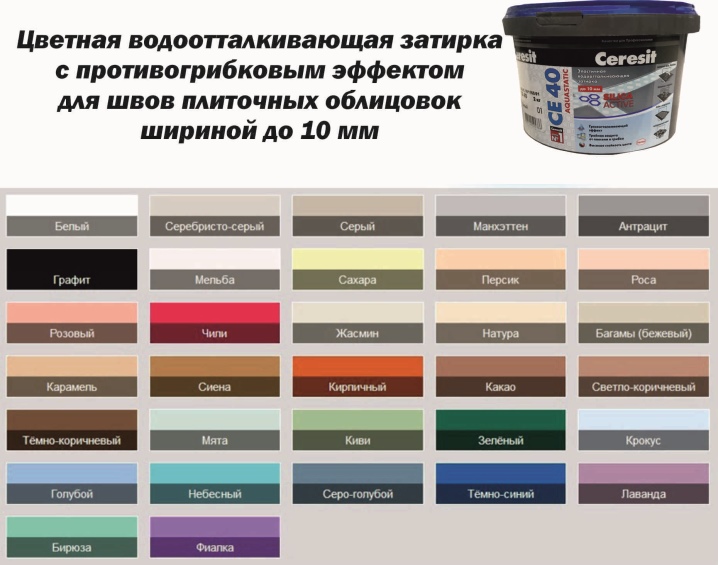
- The Mapei brand and its Keracolor FF pool grout. It is also based on cement, but with the addition of a small amount of epoxy resins and modifying additives.The product has increased compressive and flexural strength, as well as increased frost resistance (which is ensured by low moisture absorption). For mixing, an aqueous solution of a polymer additive from the same manufacturer is used, which increases the strength and reliability of the grout.
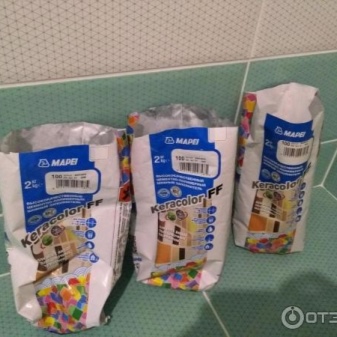
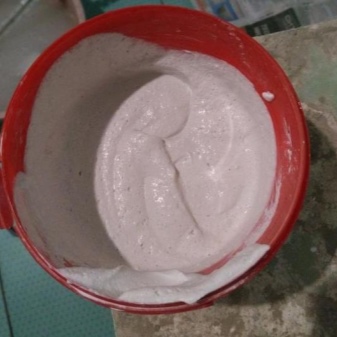
- Litokol produces Starlike C. 250 Sabbia pool trowel adhesive. An epoxy compound that guarantees complete moisture resistance of the seams. Suitable for filling joints between tiles and mosaics. A feature of the composition is its inertness to alkalis and acids, improved antibacterial properties and resistance to UV rays. Eco-friendly composition, easy to apply and use.
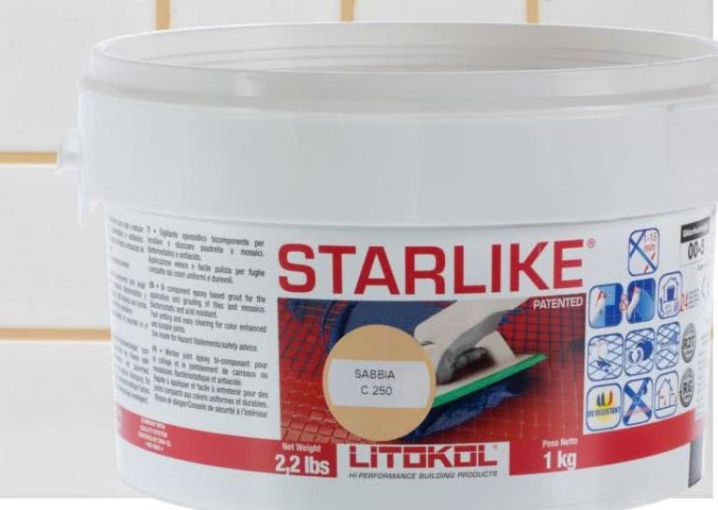
Selection rules
When choosing a grout, make sure it is designed for pool grouting and is suitable for outdoor use. Only in this case the composition will correspond to the previously indicated characteristics.
For grinding internal seams, that is, in contact with water, preference should be given to compositions based on epoxy resins. They demonstrate the best adhesion and strength, and are also resistant to chlorine, sea salt and other aggressive components added to water.
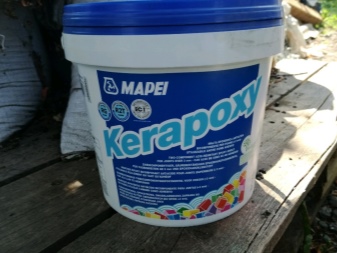
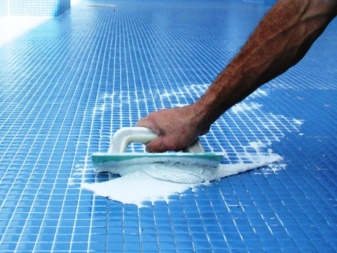
If it is necessary to grind the seams in the area of the sides, you can also use cement grout around the pool. It is cheaper and, since it does not constantly come into contact with the mass of water, it will be characterized by high performance properties.
In terms of aesthetic qualities, epoxy mosaics usually have more shades (some manufacturers have up to 400) than cement ones. When laying the bowl with mosaics, it is recommended to choose epoxy compounds, since on a mosaic surface, the result depends largely on the tone of the grout.
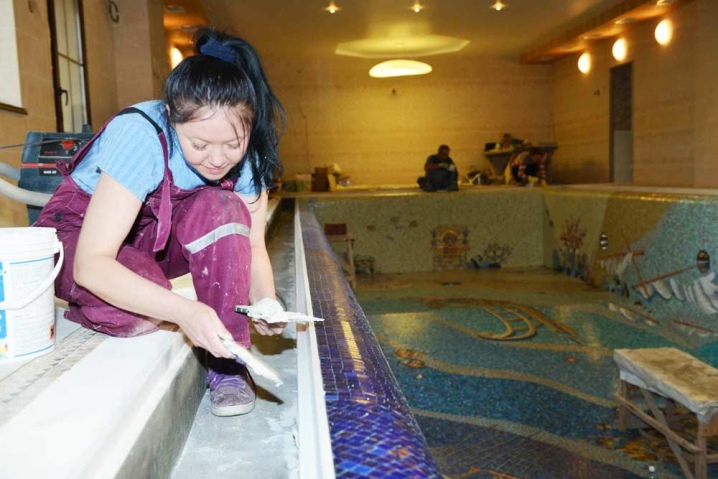
It is important to understand that the consumption of grout when used on a mosaic surface significantly exceeds the consumption required for the design of the joints between the tiles.
When using transparent tiles, a usually white grout is chosen. If a colored product is purchased, it should be understood that a transparent product absorbs the color of the grout, which is why it will no longer look transparent.

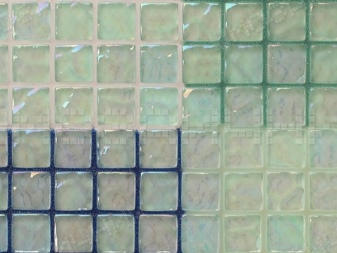
Application features
Grouting the joints between the tiles is the final stage in the construction of the pool, following the lining of the bowl and other areas around it (sides, recreation area) with tiles or mosaics.
First of all, you need to dust the surface between the seams, and then wipe it with a soft cloth. The seams must be completely dry (you can verify this by waiting exactly as long as indicated in the instructions for the tile adhesive). To apply the grout, you will need a triangular or rectangular rubber trowel.
The grout is diluted in accordance with the instructions. It is best to do this in small portions to avoid quick setting of the material prior to application.
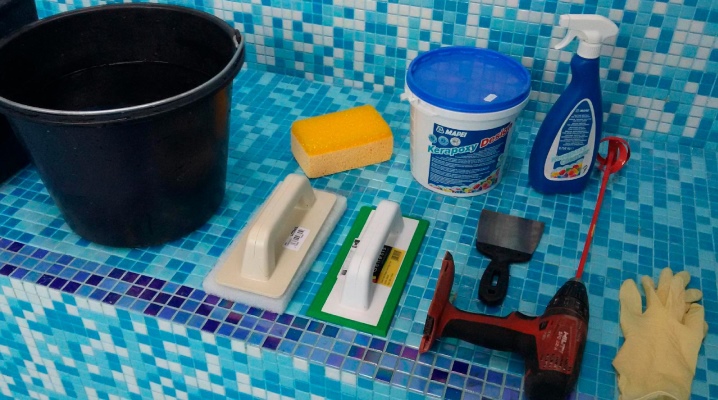
To dilute the composition, a construction mixer should be used, with the help of which it will be possible to obtain a homogeneous mixture. It is important to follow the manufacturer's specified proportions of dry trowel powder to liquid.
A small amount of grout is spread over the surface of the trowel, after which it is pressed with pressure along the seam.
It is important that the grout evenly fills the joints, otherwise untreated areas will remain. Excess composition on the tiles should be removed immediately.
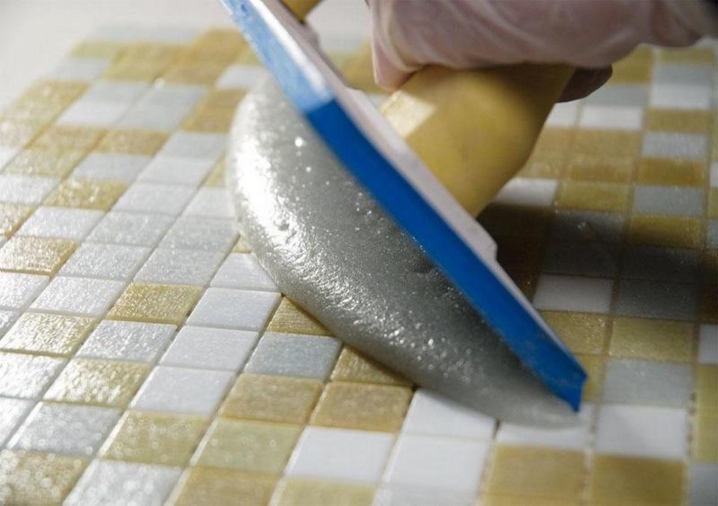
The use of one or another glue for the seams dictates the time after which you can fill the bowl with water. If a two-component cement mass was used, then the pool can be filled with water in a day. If epoxy - after 6 days. Before filling the bowl with water, you should study the instructions and make sure that the elapsed time is sufficient for the seams to completely harden.
For more on pool grout, see the video below.



































































The comment was sent successfully.